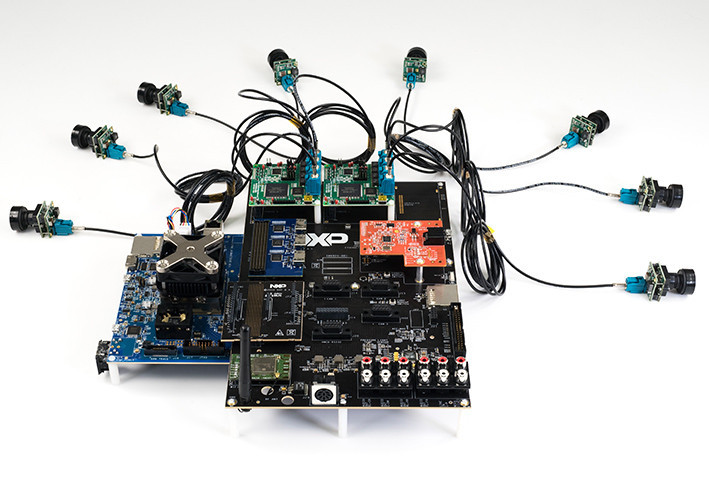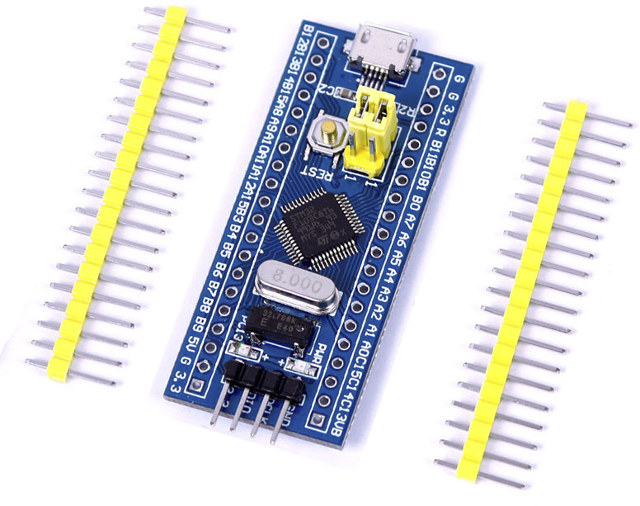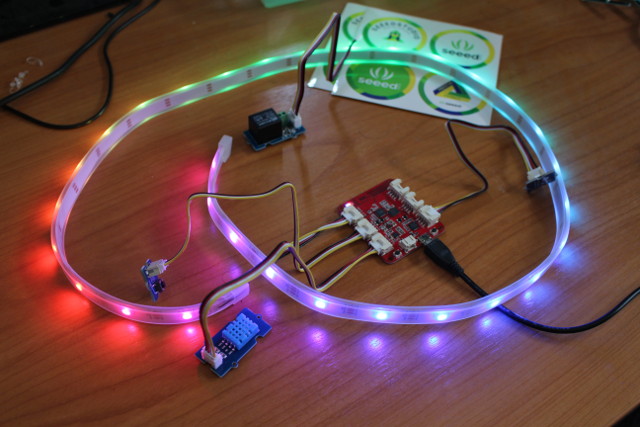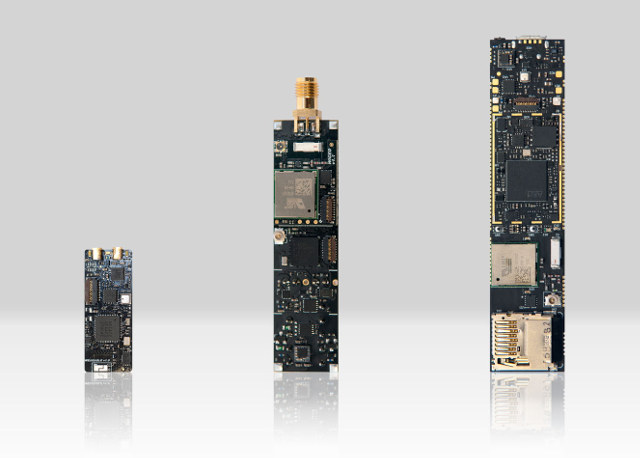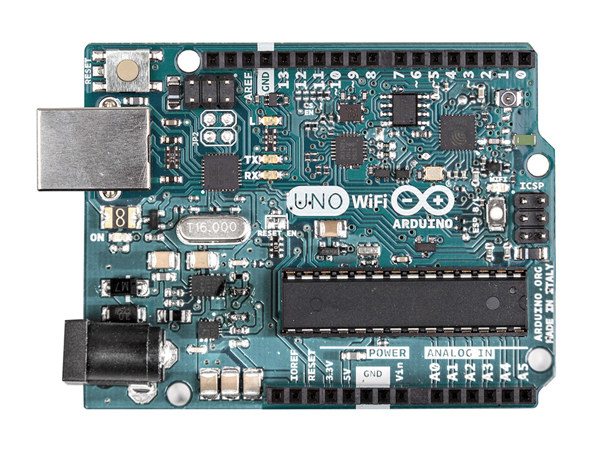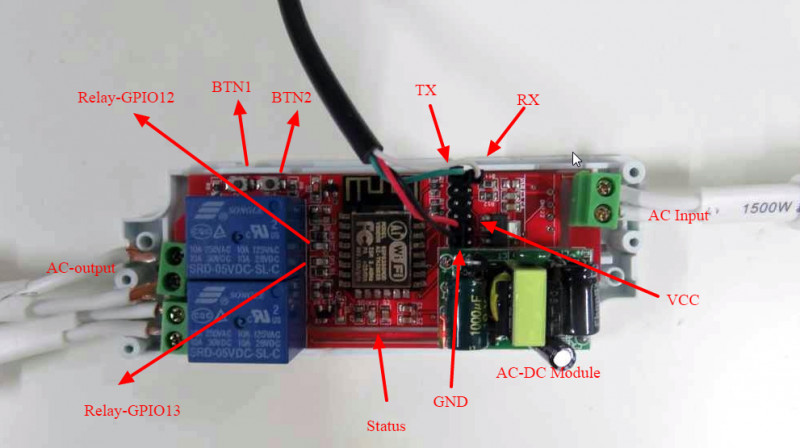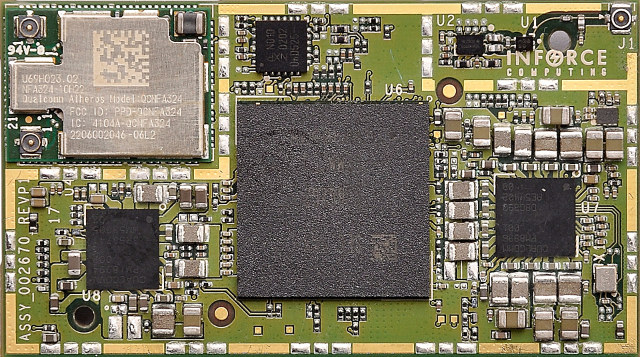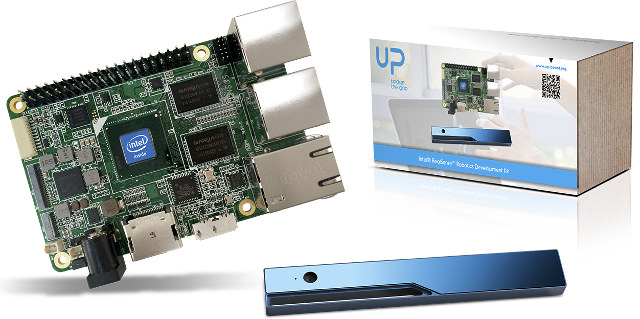Freescale, now NXP, i.MX 8 processors have been a long time coming, but finally the company has now unveiled a Multisensory Enablement Kit based on i.MX 8 hexa core ARMv8 processor combined with a Vulkan-ready & OpenCL capable GPU. Key features of the development kit: Multisensory Processor Board Multisensory Expansion Board Isolation and separation of secure, safe and open domains Rich compute (6x ARMv8 64-bit main CPUs, OpenCL GPU) Vulkan-ready GPU with HW tessellation and geometry shading Efficient, multi-screen (4x) support via HW virtualization Failover-ready display path Up to 8x camera input for 360 degree vision Integrated vision processing HDR enhanced video Multi-sensor fusion and expansion Multi-core audio and speech processing NXP radio solution integration However, at the time of writing, there’s very little information about i.MX8 processors themselves, but I’m confident much more info should soon surface as NXP FTF 2016 is taking place now until May 19, 2016. […]
“BluePill” is a $2 Arduino Compatible Development Board Based on STMicro STM32 MCU
I’m amazed that if your budget for a board was just $5 for one MCU board, you now have so many options for your electronics projects: ESP8266 boards, a few STM8 boards, One Dollar Board project, and many more… Other options are “BluePill” or “RedPill” boards based on STM32 or GD32 32-bit ARM Cortex M3 micro-controllers that go for about $2 shipped, and can be programmed with the Arduino IDE thanks to STM32Duino project. BluePill board specifications: MCU – STMicro STM32F103C8T6 ARM Cortex-M3 MCU @ 72 MHz with 64KB flash memory, 20KB SRAM. USB – 1x micro USB port for power and programming Debugging – 4x pin SWD header or micro USB port Expansion – 2x 20-pin with power signals, I2C, SPI, GPIOs, ADC inputs, etc… Misc – Reset button, two jumpers (for boot mode), power and user LEDs. Power – 5V via USB, 2.0-3.6V power via 3.3V pin on […]
Getting Started with Wio Link Starter Kit, Visual Programming Android App, and IFTTT
Wio Link is a board based on ESP8266 WiSoC that is supposed to be easy to set up thanks to Grove modules – no breadboard and mesh or wires – and, as I first understood it, to program thanks to a drag-and-drop mobile app that does not require any actual programming. More advanced users can also use a RESTful API in Python, JavaScript, Node.js, PHP, Objective-C or Java. I’ve been sent a $49 Wio Link Starter Kit including the board, a USB cable, and six Grove modules to evaluate the kit. I’ll start by having a look a the kit, before experimenting with the Wio Link Android app. Wio Link Starter Kit Unboxing The kit is sent in a red plastic case. Wio Link board is lodged in the top cover, and other accessories are placed in bags in the main part of the case. Let’s check the board first. […]
LX IoT Cores Are Made for IoT and Wearables with Bluetooth LE, ANT+, 2G/3G, Sigfox, LoRa, and More
LX Group, an Australian company specializing in electronics design and embedded systems, has introduced three wireless modules for IoT and wearables which they call “LX IoT Cores”, and embeds various wireless protocol such as Bluetooth LE/Ant+, 2G/3G connectivity, WiFi, Lora, Sigfox, Taggle, etc… Let’s go though the main technical specs for the three modules, one of which it itself modular (hence the max and min size) depending on your requirements. LX Cellular Core (Right) MCU – STMicro STM32F217IGH6 ARM Cortex-M3 MCU @ 120 MHz with 1MB flash, 128kB RAM Storage – 1x micro SD card reader Communication Interfaces Radios – 2G/3G, WiFi, BLE, ANT+, provision for LoRa, Taggle, SigFox, optional GPS via daughter board Wired – USB, RS485, UART, SPI, I2C, Digital IO, ADC Sensors – Ambient Luminosity, accelerometer, gyroscope, magnetometer, temperature, humidity, air pressure, microphone USB – 1x micro USB port Misc – Reset and 2x user buttons, 2x […]
Arduino UNO WiFi Board Combines Atmel ATmega328P MCU with ESP8266 SoC
Arduino.org (Arduino Srl) has launched Arduino UNO WiFi board, bringing Arduino (Atmel ATMega328P MCU) and ESP8266 together, and adding WiFi to the popular Arduino UNO board, while keeping all existing interfaces and headers. Arduino UNO WiFi (A000133) board specifications: Arduino part MCU – Atmel ATmega328 8-bit AVR MCU @ 16 MHz with 32 KB flash Memory, 2KB SRAM, 1KB EEPROM Digital I/O pins – 14, with 6 PWM and UART Analog Input Pins – 6 DC Current per I/0 – 40 mA Misc – Reset button Operating Voltage – 5 V ESP8266 part SoC – Expressif ESP8266EX Tensilica Xtensa LX106 processor @ 80 MHz Storage – 4MB SPI flash Connectivity – 802.11 b/g/n WiFi @ 2.4 GHz, wake up time < 2 ms; Antenna: PCB and IPX Misc – Bootloader button, WiFi LED Operating Voltage – 3.3 V Common specs USB – 1x USB device port Input Voltage – 5-12 […]
Electrodragon WiFi IoT Relay Includes ESP8266 Module, AC Power, and Enclosure for $6
Thanks to ESP8266, the cost of WiFi relays has dramatically come down, but so far, I could not find an all-in-one solution with ESP8266, relay, AC power and enclosure, and for example I’m still using NodeMCU board, a relay board, a USB power supply, and put all that into a plastic jar in order to control a water pump. It works but it’s not ideal, and solutions like Wemos D1 mini with relay shield improves things further, but Electrodragon has come with a connect-and-play WiFi IoT relay that integrates everything including the case for $6 + shipping. Wifi IoT Relay Board Based on ESP8266: WiFi module – ESP-12F based on Espressif ESP8266EX WiSoC Relays – 2x Songle SRD-05VDC-SL-C relays supporting 125VAC/10A, 250VAC/10A, 30VDC/10A, 28VDC/10A Input/Output – 3x terminal blocks for relay and power Expansion – 12-pin header with Rx/Tx, GPIO4, Btn2, GPIO15, 5V/GND, ADC, GPIO5, Btn1, OUTPUT1, and 3V3 Debugging […]
Inforce 6601 micro SoM Snapdragon 820 System-on-Module Embeds WiFi, Bluetooth and GPS
We’ve already seem Intrinsyc’s Snapdragon 820 development board and module, but there’s now an alternative thanks to Inforce Computing 6601 micro SoM which is pin-to-pin compatible to the company’s earlier Inforce 6401 and Inforce 6501 Micro SOMs, also based on Qualcomm Snapdragon processors, and works with the same SYS6501 carrier board. Inforce Computing 6601 Micro SoM specifications: SoC – Qualcomm Snapdragon 820 (APQ8096) quad core ARMv8 processor with two “Gold” cores up to 2.2 GHz, two “Silver” cores up to 1.6 GHz, Adreno 530 GPU with support for OpenGL ES 3.2, OpenCL 2.0, and Vulkan, as well as Hexagon 680 DSP up to 825 MHz System Memory – 4GB LPDDR4 @ 1866 MHz Storage – 64GB UFS 2.0 gear 3 flash up to 5.83Gbps, 1x micro SD card 3.0 interface for support for to HS400, optional eMMC 5.1 flash. Connectivity – Bluetooth 4.1 & 2×2 dual band 802.11 b/g/n/ac Wi-Fi […]
Intel RealSense Robotic Development Kit Features Atom x5 UP Board, Realsense R200 Depth Camera
An Intel Developer Forum is currently taking place in Shenzhen, China, which may explains why we have several Intel products announcements targeting developers such as the launch of Quark D2000 development board. Another product for makers and developers is Intel RealSense Robotic Development Kit combining Raspberry Pi like UP Board powered by Intel Atom x5-Z8350 processor with Intel RealSense camera (R200) in order to bring 3D / depth vision to robots. UP Board specifications have changed a little as the processor is now Z8350 instead of Z8300, and they now have a version with 4GB RAM used in the kit: SoC – Intel Atom x5-Z8350 “Cherry Trail” quad core processor @ 1.44 GHz (Burst frequency: 1.92 GHz) with Intel Gen8 HD graphics System Memory – 4GB DDR3L-1600 Storage – 32 GB eMMC flash Video Output / Display – HDMI 1.4b, MIPI DSI/eDP interface Audio I/O – HDMI, I2S Connectivity – […]


